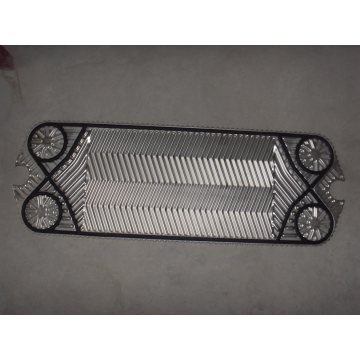
Sealing materials should meet the requirements of sealing function. Due to different media to be sealed and different working conditions of the equipment, sealing materials are required to have different adaptability. The requirements for sealing materials are generally:
1) The material has good density and is not easy to leak media;
2) Have appropriate mechanical strength and hardness;
3) Good compressibility and resilience, small permanent deformation;
4) Does not soften or decompose at high temperatures, does not harden or crack at low temperatures;
5) It has good corrosion resistance and can work for a long time in acid, alkali, oil and other media. Its volume and hardness change are small, and it does not adhere to the metal surface;
6) Small friction coefficient and good wear resistance;
7) It has the flexibility to combine with the sealing surface;
8) Good aging resistance and durability;
9) It is easy to process and manufacture, cheap and easy to obtain materials.
Rubber is the most commonly used sealing material. In addition to rubber, other suitable sealing materials include graphite, polytetrafluoroethylene and various sealants.
General rubber sealing product materials
General-purpose rubber sealing products are increasingly used in national defense, chemical industry, coal, petroleum, metallurgy, transportation and machinery manufacturing industries, and have become basic parts and accessories in various industries.
Commonly used materials for rubber sealing products are as follows.
1 Nitrile rubber
Nitrile rubber has excellent resistance to fuel oil and aromatic solvents, but is not resistant to media such as ketones, esters and hydrogen chloride. Therefore, oil-resistant sealing products mainly use nitrile rubber.
2 Neoprene rubber
Neoprene has good oil and solvent resistance. It has good resistance to gear oil and transformer oil, but not to aromatic oil. Neoprene also has excellent resistance to weather aging and ozone aging. The cross-linking fracture temperature of chloroprene rubber is above 200°C, and chloroprene rubber is usually used to make door and window sealing strips. Neoprene also has good corrosion resistance to inorganic acids. In addition, because chloroprene rubber also has good flexibility and air permeability, it can be made into diaphragms and vacuum sealing products.
3 Natural rubber
Compared with most synthetic rubbers, natural rubber has good comprehensive mechanical properties, cold resistance, high resilience and wear resistance. Natural rubber is not resistant to mineral oil, but is stable in vegetable oils and alcohols. In the hydraulic brake system with brake fluid composed of a mixture of n-butanol and refined castor oil, the rubber bowl used as the sealing element and the rubber ring are all made of natural rubber. General sealants are also commonly made of natural rubber.
4 Fluorine rubber
Fluorine rubber has outstanding heat resistance (200~250℃) and oil resistance. It can be used to make cylinder liner seals, rubber bowls and rotating lip seals, which can significantly extend the service life.
5 Silicone rubber
Silicone rubber has outstanding high and low temperature resistance, ozone resistance and weather aging resistance. It can maintain its unique elasticity, ozone resistance and weather resistance in the operating temperature range of -70 ~ 260°C. It is suitable for manufacturing parts in thermal mechanisms. Required sealing gaskets, such as strong light source lampshade sealing rings, valve gaskets, etc. Since silicone rubber is not resistant to oil, has low mechanical strength, and is expensive, it is not suitable to make oil-resistant sealing products.
6 EPDM rubber
The main chain of EPDM rubber is a fully saturated linear structure without double bonds. There is diene on its side chain, so it can be vulcanized with sulfur. EPDM rubber has excellent aging resistance, ozone resistance, weather resistance, heat resistance (can be used in an environment of 120℃ for a long time), chemical resistance (such as alcohol, acid, strong alkali, oxidant), but not Resistant to corrosion by aliphatic and aromatic solvents. EPDM rubber has the lowest density among rubbers and has high filling characteristics, but lacks self-adhesion and mutual adhesion. In addition, EPDM rubber has outstanding steam resistance and can be used to make steam-resistant diaphragms and other sealing products. EPDM rubber has been widely used in washing machines, TV accessories and door and window sealing products, or in the production of rubber strips of various composite profiles.
7 Polyurethane rubber
Polyurethane rubber has excellent abrasion resistance and good air impermeability, and its operating temperature range is generally -20 to 80°C. In addition, it also has moderate resistance to oil, oxygen and ozone aging, but is not resistant to acids, alkalis, water, steam and ketones. Suitable for manufacturing various rubber sealing products, such as oil seals, O-rings and diaphragms.
8 Chloroether rubber
Chloroether rubber has the advantages of nitrile rubber, chloroprene rubber, and acrylic rubber. It has good oil resistance, heat resistance, ozone resistance, flame resistance, alkali resistance, water resistance and organic solvent resistance, and has good process performance. Its cold resistance is poor. When the operating temperature is not too low, chloroether rubber is also a good material for manufacturing oil seals, various sealing rings, gaskets, diaphragms and dust covers and other sealing products.
9 Acrylic rubber
Acrylic rubber is resistant to heat oil (mineral oil, lubricating oil and fuel oil), especially oil resistance and stability at high temperatures, generally up to 175°C, and can withstand temperatures up to 200°C when used intermittently or for a short period of time. Its disadvantage is poor cold resistance. Therefore, it is suitable for making oil seals that can withstand high-temperature oil in non-cold areas, but it is not suitable for sealing products that are subject to tensile or compressive stress at high temperatures.




![]() December 27, 2023
December 27, 2023 Sealing materials should meet the requirements of sealing function. Due to different media to be sealed and different working conditions of the equipment, sealing materials are required to have different adaptability. The requirements for sealing materials are generally:
Sealing materials should meet the requirements of sealing function. Due to different media to be sealed and different working conditions of the equipment, sealing materials are required to have different adaptability. The requirements for sealing materials are generally: